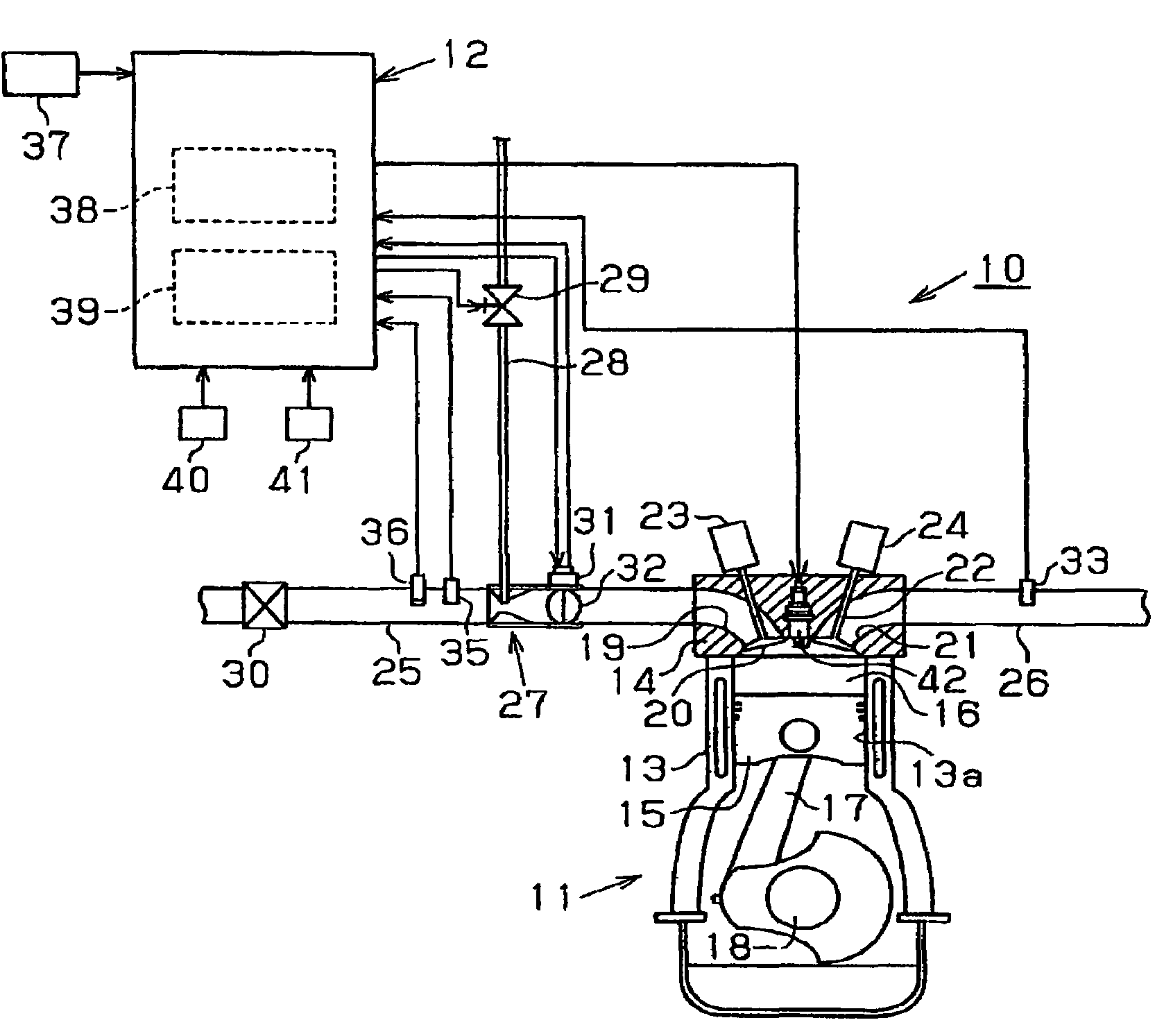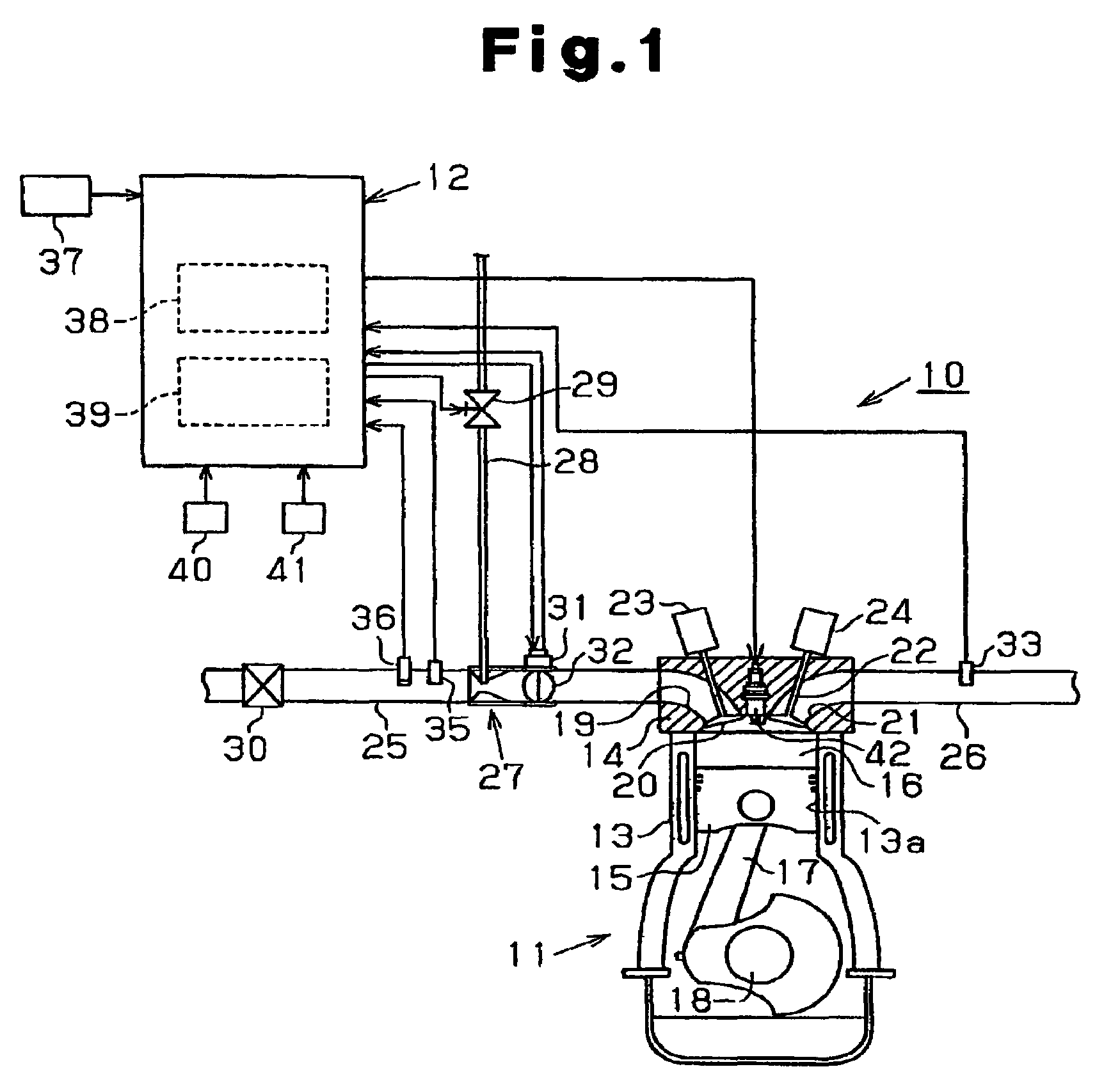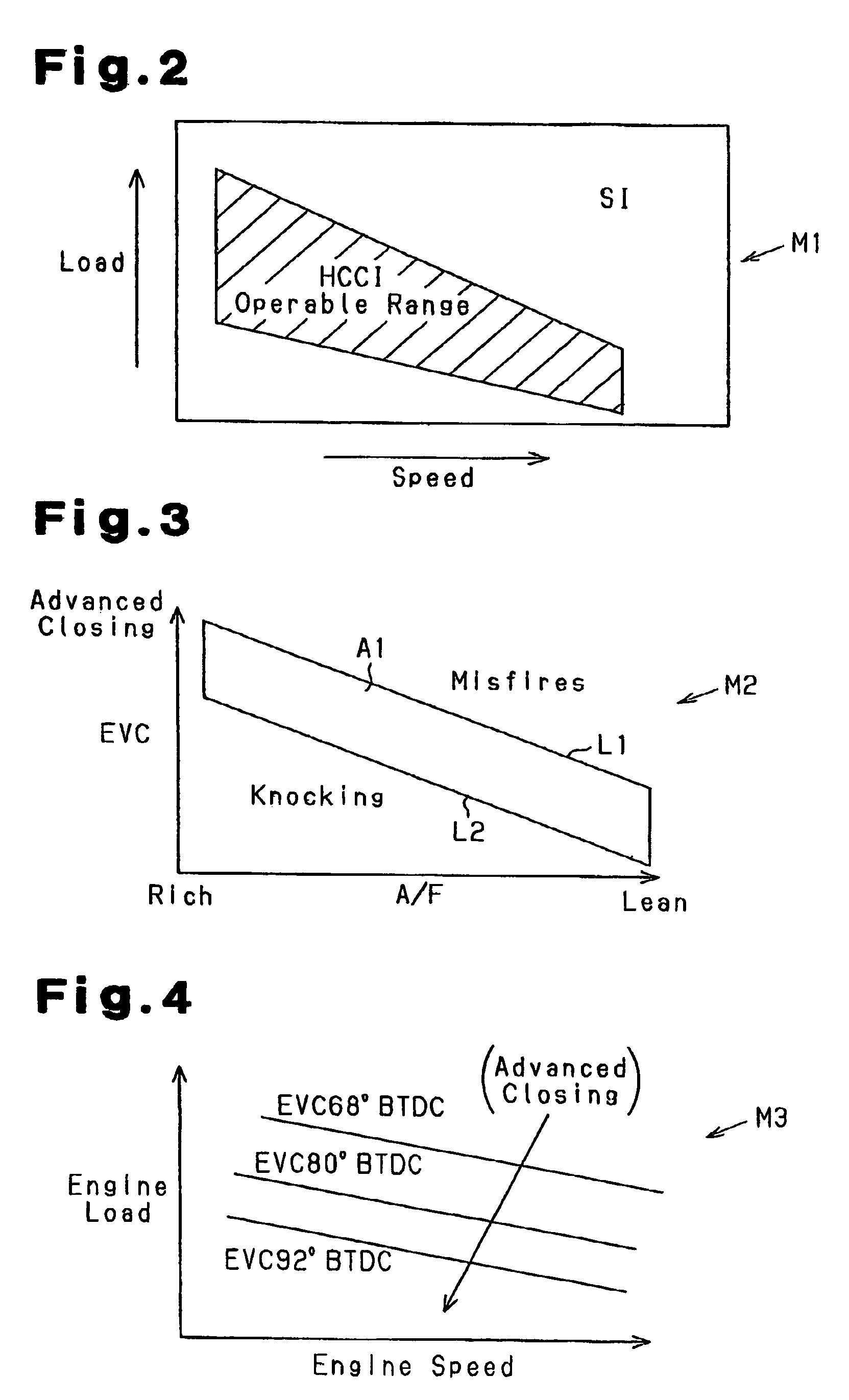Homogeneous charge compression ignition engine and method for operating homogeneous charge compression ignition engine
a charge compression and ignition engine technology, applied in the direction of ignition automatic control, electric control, instruments, etc., can solve the problem of limited concentration ratio at which a spark may propagate, diesel engine thermal efficiency inferior to that of si engine, diesel engine does not sufficiently mix fuel and air, etc., to prevent the occurrence of knocking
- Summary
- Abstract
- Description
- Claims
- Application Information
AI Technical Summary
Benefits of technology
Problems solved by technology
Method used
Image
Examples
Embodiment Construction
[0024]A stationary HCCI engine 10 according to a preferred embodiment of the present invention will now be described with reference to FIGS. 1 to 7. FIG. 1 is a schematic diagram of the HCCI engine 10.
[0025]The HCCI engine 10 includes an engine body 11 and a controller 12, which electronically controls the HCCI engine 10.
[0026]The engine body 11 includes a cylinder block 13, which houses a plurality of cylinders 13a (only one shown in FIG. 1), and a cylinder head 14. A piston 15 reciprocates in each cylinder 13a. A combustion chamber 16 is defined in each cylinder 13a between the piston 15 and the cylinder head 14. The piston 15 is propelled to reciprocate in the cylinder 13a by the force generated by the combustion of air-fuel mixture in the combustion chamber 16 after the intake and compression strokes. The reciprocation of the piston 15 is converted to rotation of a crankshaft 18, which functions as an output shaft, by a connection rod 17 to generate the output of the engine body...
PUM
 Login to View More
Login to View More Abstract
Description
Claims
Application Information
 Login to View More
Login to View More - R&D
- Intellectual Property
- Life Sciences
- Materials
- Tech Scout
- Unparalleled Data Quality
- Higher Quality Content
- 60% Fewer Hallucinations
Browse by: Latest US Patents, China's latest patents, Technical Efficacy Thesaurus, Application Domain, Technology Topic, Popular Technical Reports.
© 2025 PatSnap. All rights reserved.Legal|Privacy policy|Modern Slavery Act Transparency Statement|Sitemap|About US| Contact US: help@patsnap.com



